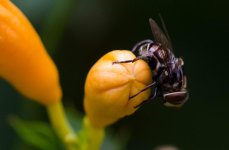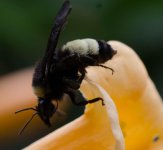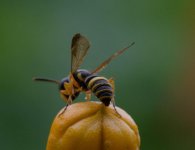Hello,
Recently I have gotten interested in the idea of extreme macro. Close up photos of a bug's face or the center of a flower are good examples. There are plenty of cool samples online. I read that you could take a macro lens and a prime lens, connect them together via a step down ring and come up with a setup that will allow you to accomplish this super macro. In my case, I am using a 200mm f4 and 50mm f1.4. Here is a link that shows some sample photos and the desired camera setup.
How to Shoot Super Macro PhotosMy problem is that I have G series 50mm which has no aperture lock ring. I have tried attaching it to the camera, setting it to 1.4 and then removing the lens. It doesn't work. The aperture closes as soon as it is removed from the camera. Would a lens with a lock ring be able to cause the aperture to remain open, essentially locked at 1.4? I am looking at the possibility of getting a d series 50mm, if it will work. The draw back is that it is another couple of hundred dollars for an almost duplicate of the lens that I already have.
I am open to other options. I have heard that you can use a extension tube to increase the focal length, but do not know much about it. I am enclosing a couple of my latest macro shots taken with my 200mm.



Recently I have gotten interested in the idea of extreme macro. Close up photos of a bug's face or the center of a flower are good examples. There are plenty of cool samples online. I read that you could take a macro lens and a prime lens, connect them together via a step down ring and come up with a setup that will allow you to accomplish this super macro. In my case, I am using a 200mm f4 and 50mm f1.4. Here is a link that shows some sample photos and the desired camera setup.
How to Shoot Super Macro PhotosMy problem is that I have G series 50mm which has no aperture lock ring. I have tried attaching it to the camera, setting it to 1.4 and then removing the lens. It doesn't work. The aperture closes as soon as it is removed from the camera. Would a lens with a lock ring be able to cause the aperture to remain open, essentially locked at 1.4? I am looking at the possibility of getting a d series 50mm, if it will work. The draw back is that it is another couple of hundred dollars for an almost duplicate of the lens that I already have.
I am open to other options. I have heard that you can use a extension tube to increase the focal length, but do not know much about it. I am enclosing a couple of my latest macro shots taken with my 200mm.



